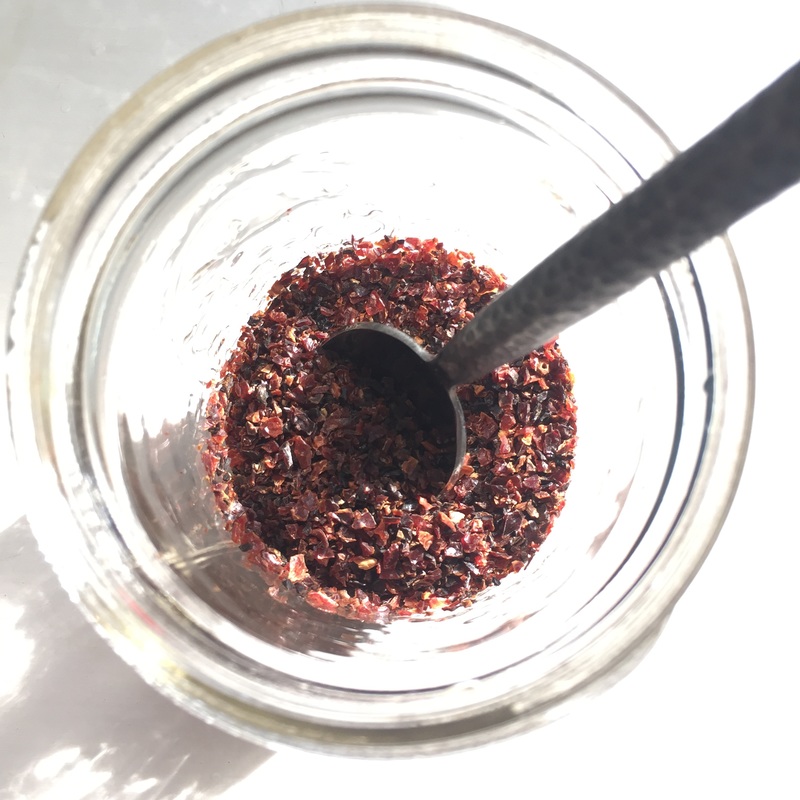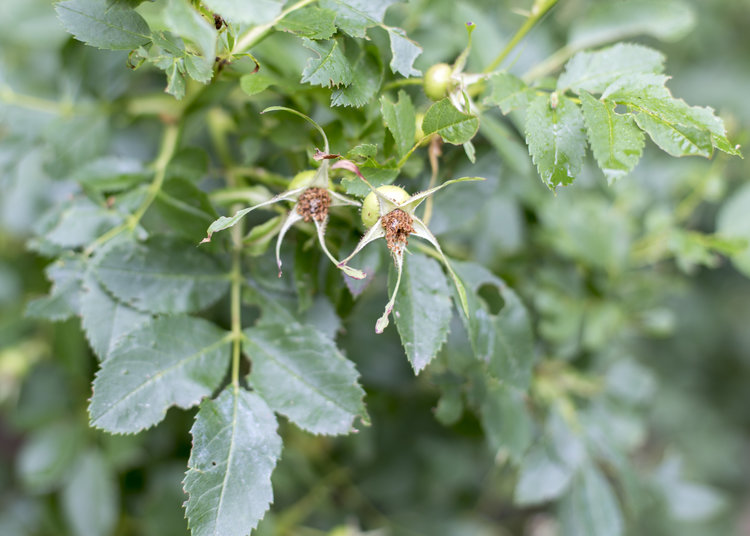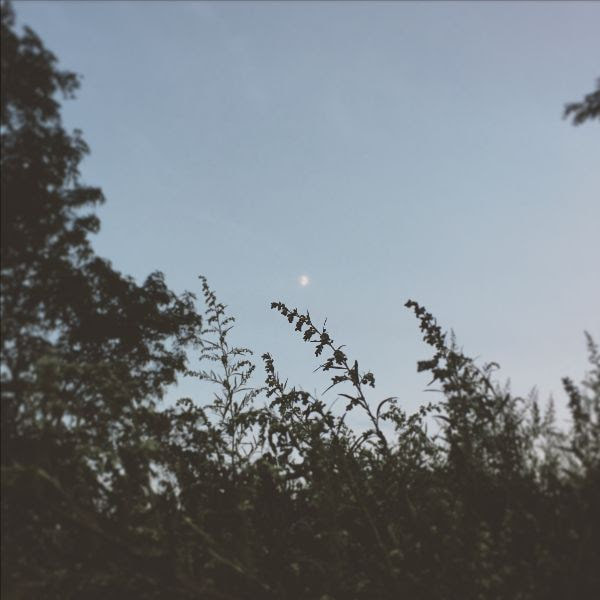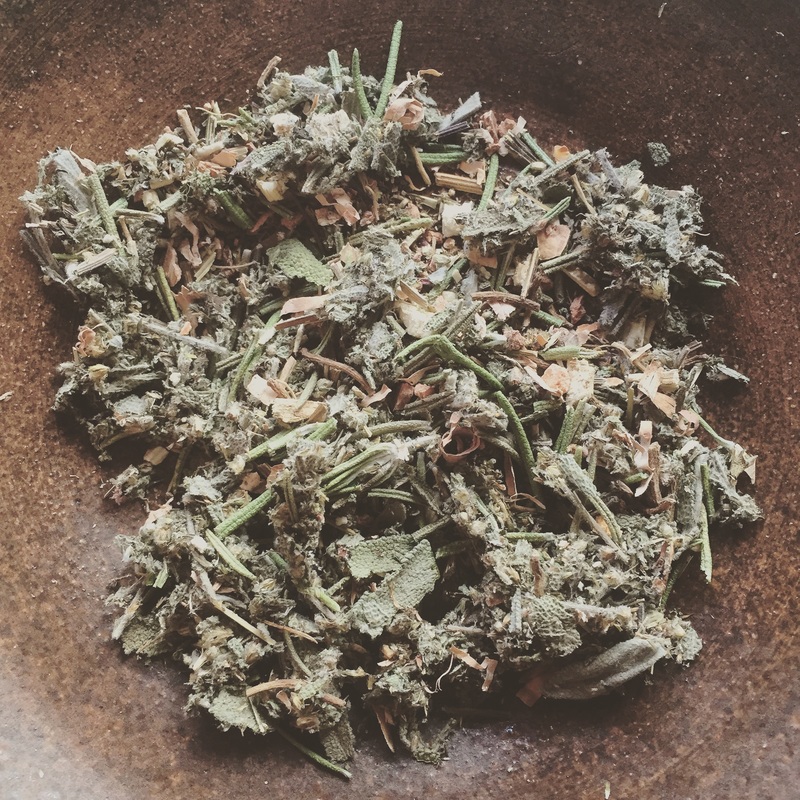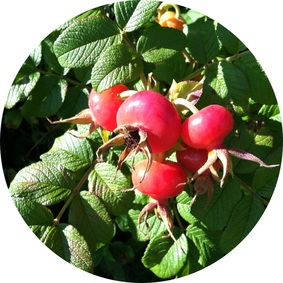 The Rose family (Rosaceae) is one of the most beloved botanical groups; humans have had a deep affinity for these plants for thousands and thousands of years. Not only does this family produce beautiful flowering plants such as spirea, potentilla, lady’s mantle, agrimony and hawthorn, but also important fruit crops such as pears, peaches, plums, cherries, quinces, almonds, raspberries and strawberries. What would our world be like without these delights?! Of all these family members, Rose is the most well-known and sought-after. She is the true queen of flowers. While most people are familiar with the aesthetic and olfactory beauty of the rose, in this country there tends to be less familiarity with the fruit of the rose, i.e. the rosehip. I adore using rosehips this time of year, when the scarlet fruits become full and ripe. All roses will develop hips once their flowers fade, but depending on the species they vary in shape, color, texture and taste. The hip of the dog rose, Rosa canina, is often sold commercially for tea. Around our neck of the woods we are lucky to find Rosa rugosa, the beach rose, which produces the most beautiful, large, tomato-like fruits. Why would we want to use rosehips? First of all, these fruits are a delicious wild edible. They are nutritive and tart, and can be infused into a tea that is high in many vitamins, especially Vitamins A and C. Even though citrus fruits get all the glory for being a great source of Vitamin C, rosehips actually contain a higher concentration of this important vitamin and are in fact one of the richest botanical sources of it. We cannot produce our own Vitamin C so it is essential that we obtain it from food. It is needed for producing hormones, neurotransmitters and hormones in the body. Having plenty of this vitamin in the diet has been correlated with a reduced risk of cancer and cardiovascular disease. In addition, Vitamin C supports the immune system and has been shown to shorten the duration of the common cold. This makes rosehips an excellent addition to fall and winter tea blends. Like other red-hued herbs and fruits -- such as schisandra, hawthorn, and hibiscus -- rosehips are high in bioflavonoids which have an antioxidant action that prevents free radical damage in the body. These bioflavonoids also strengthen heart and blood vessels. Perhaps a lesser known use of rosehips are its effect on the digestive system. The hips are anti-inflammatory and soothing, and thus are useful for hot, inflammatory conditions in the gut such as ulcers, colitis or Crohn’s. They are also a gentle laxative that is traditionally used for mild constipation; the natural pectin content has a beneficial, soothing effect on the intestinal tract. Above all, rosehips are a food. They are commonly harvested to be made into jam and jelly; they can also be baked into pies, used as a thickener for sauces (because of their pectin content), and can even be made into a beautiful soup! (Check out this Swedish rosehip soup recipe I recently discovered…) HOW TO USE ROSEHIPS
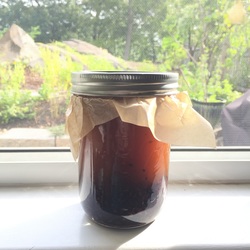 MAKING A ROSEHIP OXYMEL The combination of honey, vinegar and herbs creates an ancient preparation called an oxymel. This simple medicine dates back to the time of the Greeks and has been used for many different ailments, but most especially for digestive and respiratory issues. Today we can make oxymels as a delicious way to preserve our favorite herbs, or to create a medicinal tonic. The simplest method of making an oxymel is to mix together equal parts honey and apple cider vinegar and pour this mixture over your herbs to steep. (Use more vinegar for a thinner oxymel, less vinegar for a more syrup-y oxymel.)
Use this tart honey-vinegar concoction directly by the spoonful, or add to seltzer water for a refreshing drink. You can also use it as the base for sauces, marinades and salad dressings. MUGWORT (Artemisia vulgaris) is a queen of the weeds. This lovely plant grows gracefully by roadsides, railroad tracks, and along the edges of woods. She is a common visitor to urban environments, often towering as high as -- or higher -- than a human. Mugwort's leaves are silvery on the underside, and are pungent and aromatic when crushed.
Inside these leaves lies an array of nutrients such as calcium and magnesium. Artemisia is a traditional herb for the digestion, as it is a bitter herb that stimulates the production of stomach acid and the flow of bile. This property combined with its rich mineral content make it an ideal kitchen herb. I especially love to use it infused in apple cider vinegar -- it is delicious when drizzled over salad, vegetables, or even enjoyed by the spoonful! This unique vinegar is simple to make, full of nutrition, and is a beautiful way to make use of an abundant local plant. Read more about my love of this fascinating plant here... How to Make Mugwort Infused Vinegar:
One of my favorite books is Judith Berger's Herbal Rituals. Her beautiful words take the reader through a full year of herbal collecting and concocting, and each chapter focuses on the seasonal aspects of each month. I love what she has to say about November...
"According to the Celtic calendar, November is the first lunar month and belongs to the birch tree, the tree of beginnings. I find it important that the beginning time is situated at a moment when nature has ceased any outward signs of growth and has plunged its vitality underground. From nature's rhythm I learn that beginnings extend their tethers from an invisible core or seed that germinates best in the ground of dormancy and otherworldly visions which accompanies this month. The dropping temperatures encourage our bodies to rest, to enter the realm of sleep, so that the unconscious can send us information for our growth through the messenger of our dreams...." - from Judith Berger's Herbal Rituals, November In honor of the birch tree of beginnings, and of this season of rest and dreaming, I created this tea blend. Drink it before bed and enter sleep with the intention of remembering your dreams the next day... 1/4 to 1/2 Tblsp. Birch twigs/bark (or birch leaves if you have them) 1/2 Tblsp. Valerian root 1 Tbsp. Mugwort leaves 1 Tblsp. Sage leaves 1 Tblsp. Rosemary leaves Blend together all the herbs. Steep one heaping spoonful of the tea in a cup of hot water, for at least 10 minutes. Strain out the herbs, light a candle, and sip quietly. This recipe will make enough for 4-5 servings. |
Categories
All
Archives
January 2022
|
